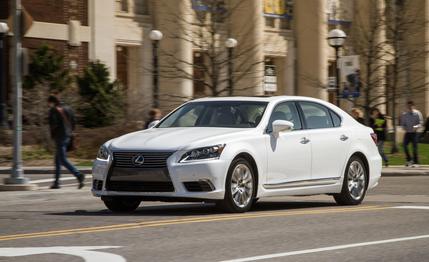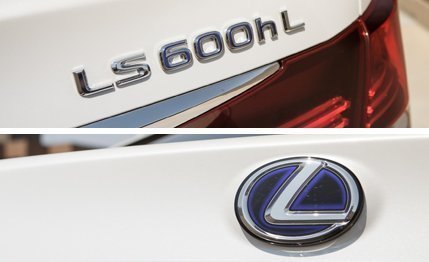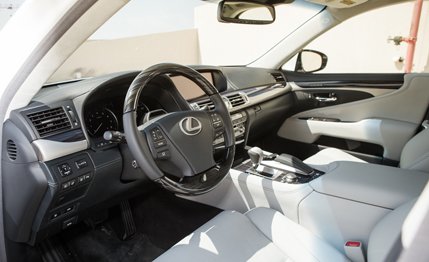 Instrumented Test
TESTED
Instrumented Test
TESTED
The LS has been the premier sedan at Lexus ever since Toyota’s luxury division made its cheeky debut on German autobahns, a not-so-subtle challenge to the Audi-BMW-Mercedes establishment. That was almost a quarter-century ago, and the LS series has since evolved, expanding from the original LS400—a car that fortified its challenge with strong performance and beautiful craftsmanship—to a luxury sedan with multiple personalities.
For 2013, there are seven LS variations, depending on how you keep score, with the 600hL continuing to function as the flagship, sumptuously appointed and hybridized to salve the consciences of conspicuous consumers. It’s big, handsome, roomy, hedonistic, crackling with electronics and connectivity, and readily identifiable as a new Lexus offering, thanks to the so-called spindle grille that distinguishes the division’s latest styling ethos.
Enhanced aesthetic appeal or not, potential buyers likely will be wrestling with bigger questions: Is this car worth its premium pricing? How much more are you willing to shell out for that hybrid badge? And what will you really get for your money?

What’s New?
Lexus claims that some 50 percent of the 2013 LS’s structure is new or revised, with upgrades to body-shell rigidity, steering system, suspension, and drivetrains, as well as exterior enhancements. And as we’ve noted in two previews of the 2013 models, the flagship is awash in standard luxury features.
As before, the LS460 lineup, including the new Sport version, is propelled by a naturally aspirated 386-hp, 4.6-liter V-8 and mated to an eight-speed automatic. The big 600 hybrid combines a long-stroke 5.0-liter version of the V-8—389 horsepower, 385 lb-ft of torque—augmented by a 221-hp AC electric motor. (The combined system output is rated at 438 horsepower.) All-wheel drive, featuring a Torsen limited-slip differential, is optional with the various 460s but standard with the hybrid, which transmits power via a continuously variable transmission.
All of this adds up at the scales. Our test car, which had a couple of big-ticket option packages, weighed in at a resounding 5470 pounds. For perspective, that’s Chevy Tahoe territory and considerably heavier than BMW’s ActiveHybrid 7, as well as the 4835-pound AWD LS460 F Sport we tested last month. It also pinches the hybrid’s capacity for people and/or cargo. The official gross vehicle weight rating is 6060 pounds. With nothing in the 16-cubic-foot trunk and four people on board, the occupants would have to average 147.5 pounds to avoid exceeding the rating. (Memo to owners: Keep a bathroom scale handy when you’re planning to fill all four seats.)

Heavy Duty
Inevitably, mass makes its presence felt at the test track. Our car managed to reach 60 mph in 6.3 seconds and covered the quarter-mile in 14.7 seconds at 100 mph. For contrast, the LS460 we tested recently did 0 to 60 in six seconds flat and the quarter-mile in 14.5. To be fair, our 600hL test car had only 248 miles on the odo when it went to the track. And its 30-to-50 and 50-to-70 passing times—3.0 and 3.7 seconds—were strong.
All that curb weight not only inhibits acceleration but also lengthens braking distances. The big Lexus has a robust brake system, with regen capability, of course, but 185 feet from 70 mph isn’t anything to be proud of, especially when the test sheet also reflects moderate fade. Our test driver noted that “this thing will drift if you ask it to,” although why anyone would want to do that with this car is a mystery.